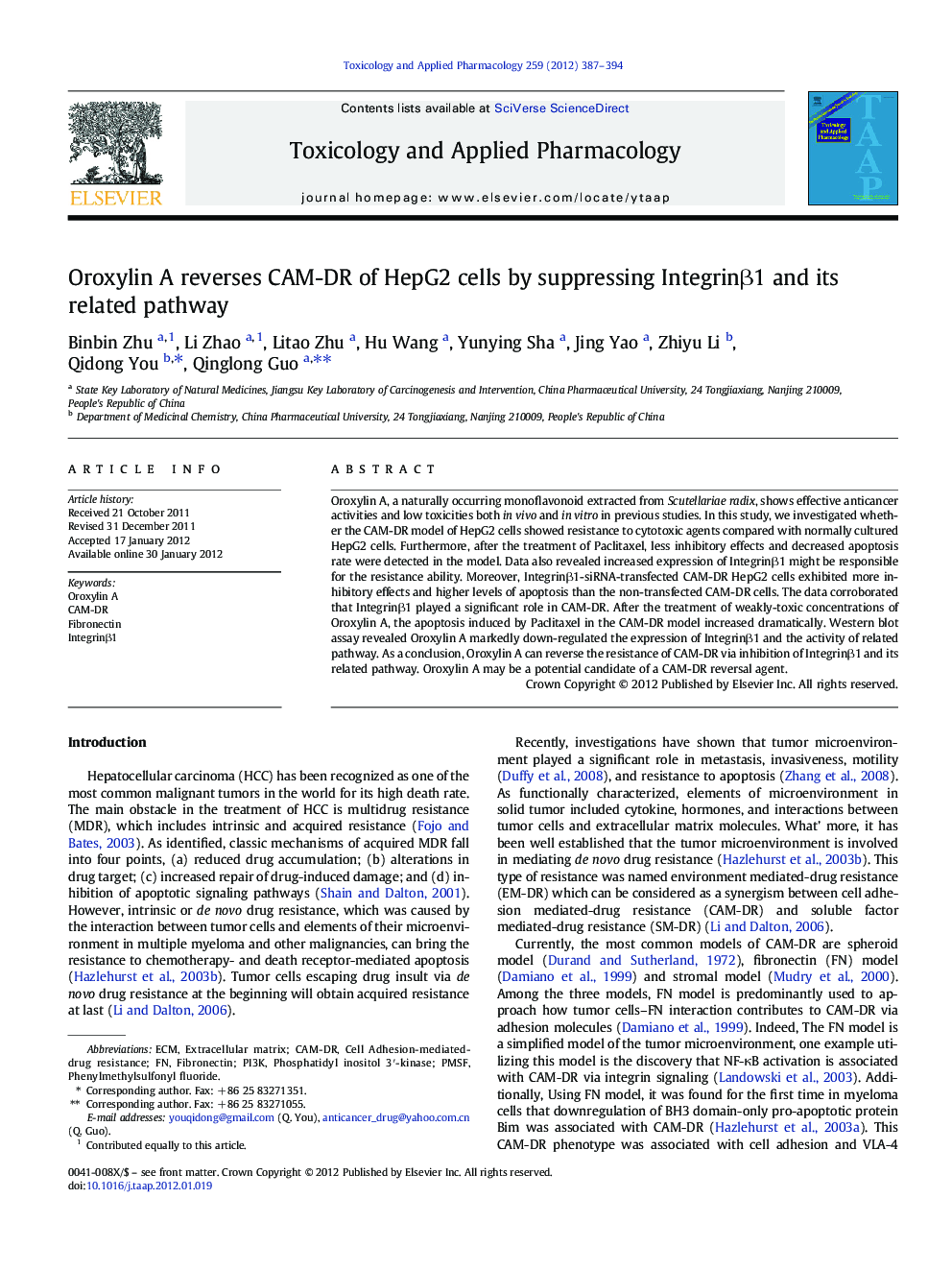| Article ID | Journal | Published Year | Pages | File Type |
|---|---|---|---|---|
| 2569085 | Toxicology and Applied Pharmacology | 2012 | 8 Pages |
Oroxylin A, a naturally occurring monoflavonoid extracted from Scutellariae radix, shows effective anticancer activities and low toxicities both in vivo and in vitro in previous studies. In this study, we investigated whether the CAM-DR model of HepG2 cells showed resistance to cytotoxic agents compared with normally cultured HepG2 cells. Furthermore, after the treatment of Paclitaxel, less inhibitory effects and decreased apoptosis rate were detected in the model. Data also revealed increased expression of Integrinβ1 might be responsible for the resistance ability. Moreover, Integrinβ1-siRNA-transfected CAM-DR HepG2 cells exhibited more inhibitory effects and higher levels of apoptosis than the non-transfected CAM-DR cells. The data corroborated that Integrinβ1 played a significant role in CAM-DR. After the treatment of weakly-toxic concentrations of Oroxylin A, the apoptosis induced by Paclitaxel in the CAM-DR model increased dramatically. Western blot assay revealed Oroxylin A markedly down-regulated the expression of Integrinβ1 and the activity of related pathway. As a conclusion, Oroxylin A can reverse the resistance of CAM-DR via inhibition of Integrinβ1 and its related pathway. Oroxylin A may be a potential candidate of a CAM-DR reversal agent.
Graphical abstractFigure optionsDownload full-size imageDownload high-quality image (179 K)Download as PowerPoint slideHighlights► Adhesion of HepG2 cells to fibronectin exhibited resistance to Paclitaxel. ► The resistance was associated with the increased expression of Integrinβ1. ► Knocking down Integrinβ1 can increase the toxicity of Paclitaxel on CAM-DR model. ► Oroxylin A reversed the resistance by suppressing Integrinβ1 and related pathway.
